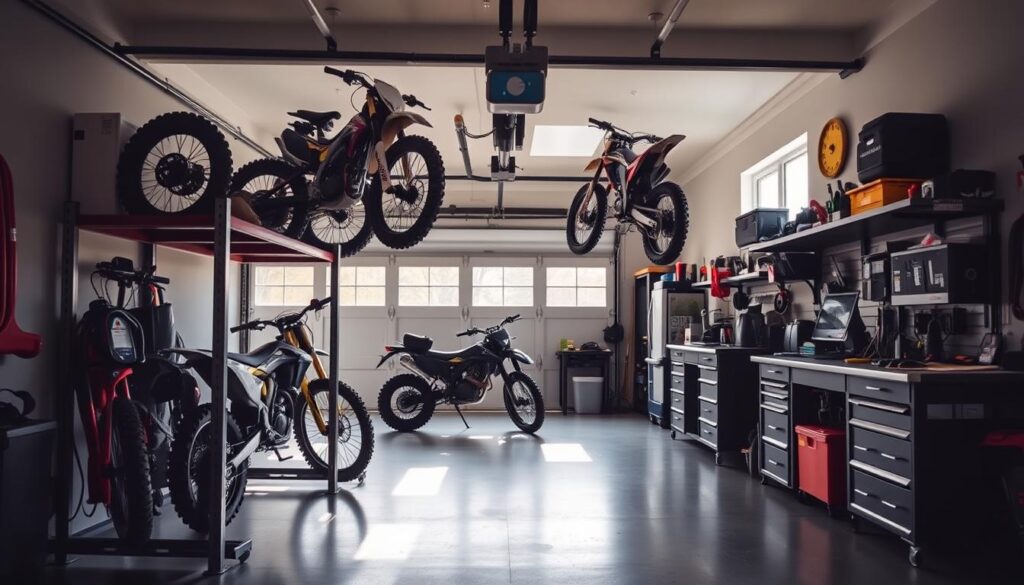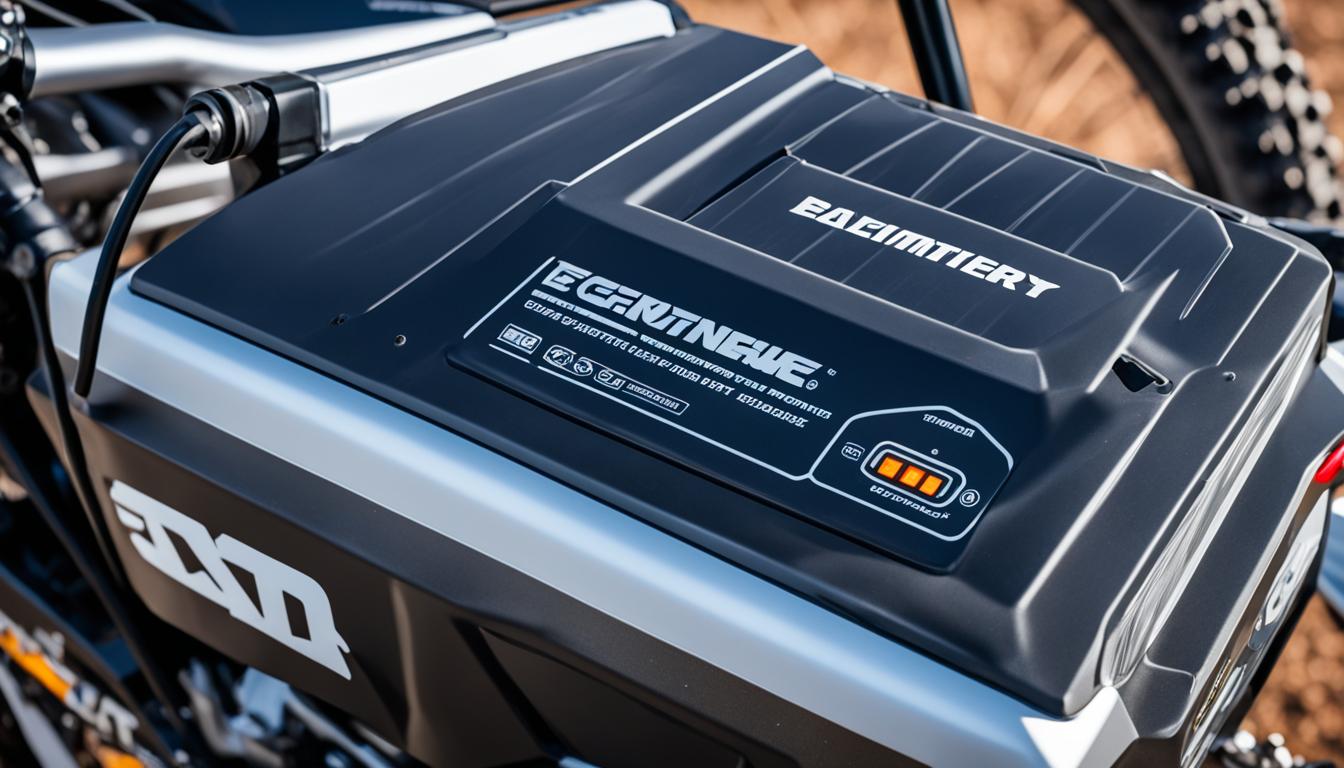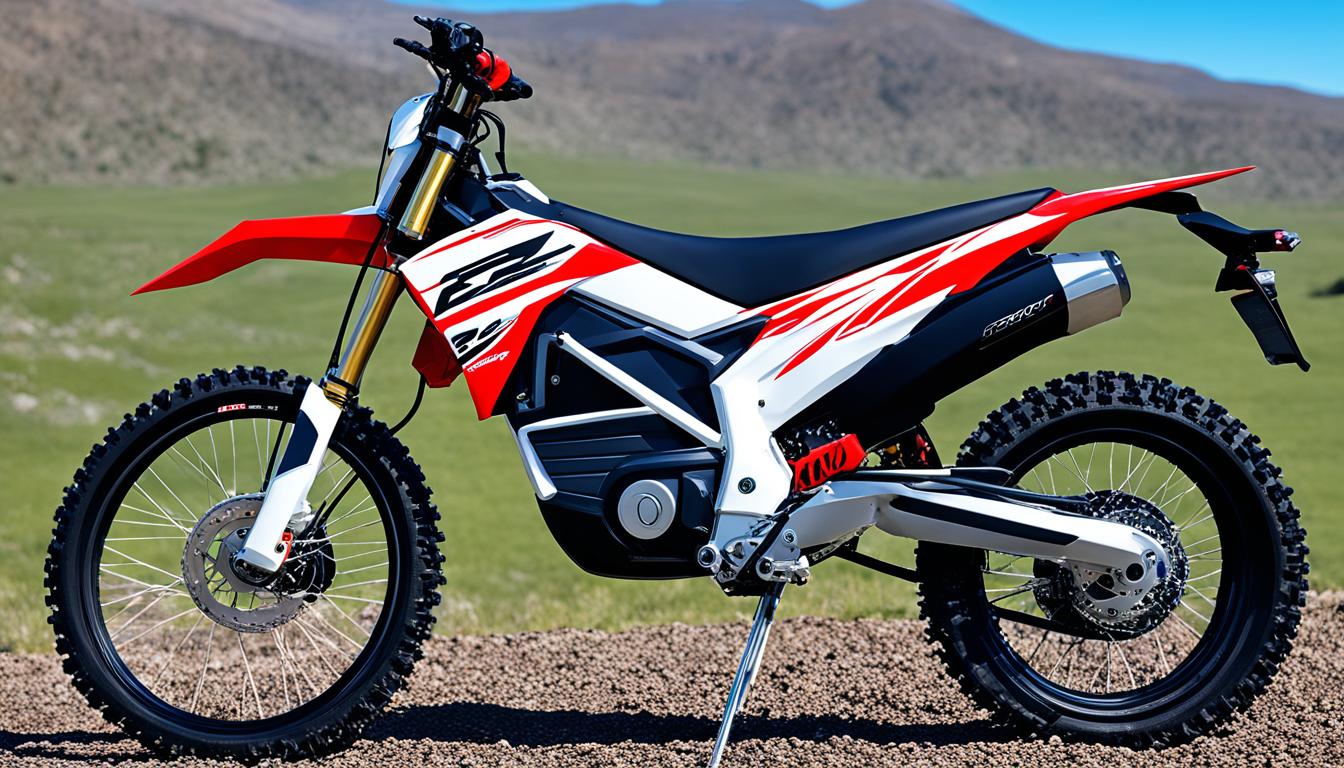As the seasons change, so do the needs of your bike. Whether you’re an avid rider or a weekend adventurer, ensuring your e-bike stays in top shape during off-season months is crucial. Proper care not only maintains its performance but also extends its lifespan, saving you time and money in the long run.
Storing your bike correctly involves more than just finding a spot in the garage. Factors like temperature, moisture, and battery care play a significant role in preserving its condition. For instance, the ideal storage temperature for e-bikes ranges between 32°F and 68°F to prevent damage to its components1.
Taking the time to clean, maintain, and protect your bike ensures it’s ready to hit the road when the weather warms up. From choosing the right location to monitoring battery levels, these simple steps can make all the difference. Let’s dive into the best practices to keep your e-bike in peak shape year-round.
Preparing Your Electric Dirt Bike for Storage
Taking the right steps before storage can significantly extend your bike’s lifespan. Proper cleaning, maintenance, and inspection ensure it stays in peak condition, ready for your next ride. Here’s how to prepare your bike for the off-season.
Cleaning & Maintenance Best Practices
Start by wiping down your bike to remove dirt and debris. Use a damp cloth for stubborn spots, but avoid water contact with electrical parts. This prevents corrosion and keeps components in good shape.
Lubricate moving parts like the chain and pedals to prevent rust. Check for any visible damage, such as cracks or wear, and address it before storage. Regular maintenance ensures your bike remains in top condition over the winter months2.
Inspecting & Securing Electrical Components
Discharge the battery to an ideal level of 50%-80% before removing it. Storing the battery fully charged or plugged in can reduce its lifespan3. Keep it in a cool, dry place, ideally between 55-77°F2.
Inspect all wiring connections for looseness or wear. Secure any loose parts to prevent future damage. Storing your bike upright in a dry area helps avoid moisture buildup and rust3.
By following these steps, you’ll ensure your bike stays in excellent condition, ready for action when the weather improves.
Choosing the Ideal Storage Location
Finding the perfect spot for your bike during off-season months is essential for its longevity. The right location protects it from harsh weather, moisture, and potential theft. Whether you choose indoor or outdoor storage, understanding the pros and cons of each option will help you make an informed decision.
Indoor vs Outdoor Options
Indoor storage is the preferred choice for most riders. It offers consistent temperatures and protection from rain, snow, and UV rays. A dry, temperature-controlled environment prevents damage to the bike’s components and extends the battery’s life4.
Outdoor storage can work for short periods, but it requires extra precautions. Use a waterproof cover to shield your bike from the elements. Secure it with high-quality locks to deter theft, as 70% of stolen bikes are taken from unsecured outdoor areas5.
Garage, Shed, and Basement Considerations
Garages are a popular choice for indoor storage. Ensure the area is well-ventilated and dry. Use wall-mounted racks to save space and keep the bike off the ground. This protects it from debris and accidental damage4.
Sheds and basements can also be effective if they remain above freezing and dry. Maintain a stable temperature between 50°F and 77°F to preserve the battery’s health4. Avoid areas with high humidity to prevent rust and corrosion.
| Storage Option | Pros | Cons |
|---|---|---|
| Indoor (Garage/Basement) | Consistent temperature, protection from weather | Requires space, may need ventilation |
| Outdoor (Covered Area) | Convenient for small spaces | Exposure to elements, higher theft risk |
By selecting the right storage location, you can ensure your bike remains in excellent condition and ready for your next ride. A dry, temperature-controlled environment is key to preserving its performance and extending its lifespan.
How to store electric dirt bikes: Battery & Component Care
Battery and component care are critical for keeping your bike in top shape. Proper maintenance ensures your e-bike performs well and lasts longer. Whether it’s short-term or long-term storage, these tips will help you protect your investment.
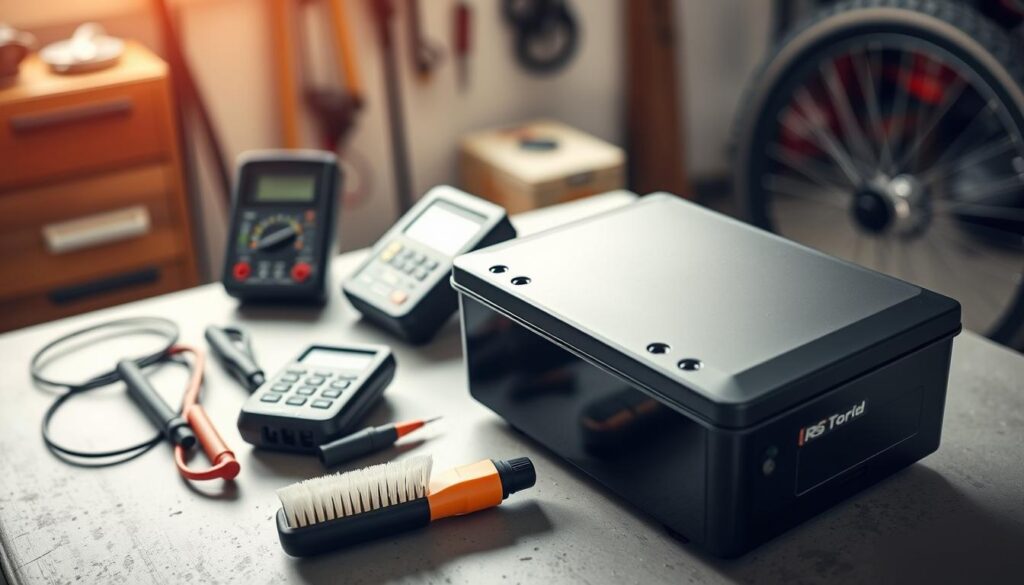
Battery Storage and Maintenance Tips
Your bike’s battery is its most important component. To maintain its health, store it at a charge level between 40% and 80%. This prevents overcharging or deep discharge, which can damage the battery6.
Keep the battery in a cool, dry place with a temperature between 50°F and 77°F. Avoid extreme heat or cold, as it can reduce its lifespan7. For long-term storage, check the battery every three months and recharge it to 60% if needed7.
Use a neoprene storage bag to protect the battery from moisture and debris. This simple step can prevent damage and extend its longevity6.
Protecting Sensitive Mechanical Parts
Mechanical parts like the chain, pedals, and brakes need special attention during winter. Apply lubricant to prevent rust and ensure smooth operation. Regular maintenance keeps these parts in good condition.
Inspect all electrical connections for wear or looseness. Secure any loose parts to avoid future issues. Storing your bike upright in a dry area helps prevent moisture buildup and rust7.
By following these steps, you’ll ensure your bike stays in excellent shape, ready for action when the weather improves.
Essential Accessories and Tips for Optimal Storage
Investing in the right accessories can make a big difference in preserving your bike’s condition during storage. High-quality covers and protective bags shield your bike from dust, moisture, and accidental damage, ensuring it stays in top shape.
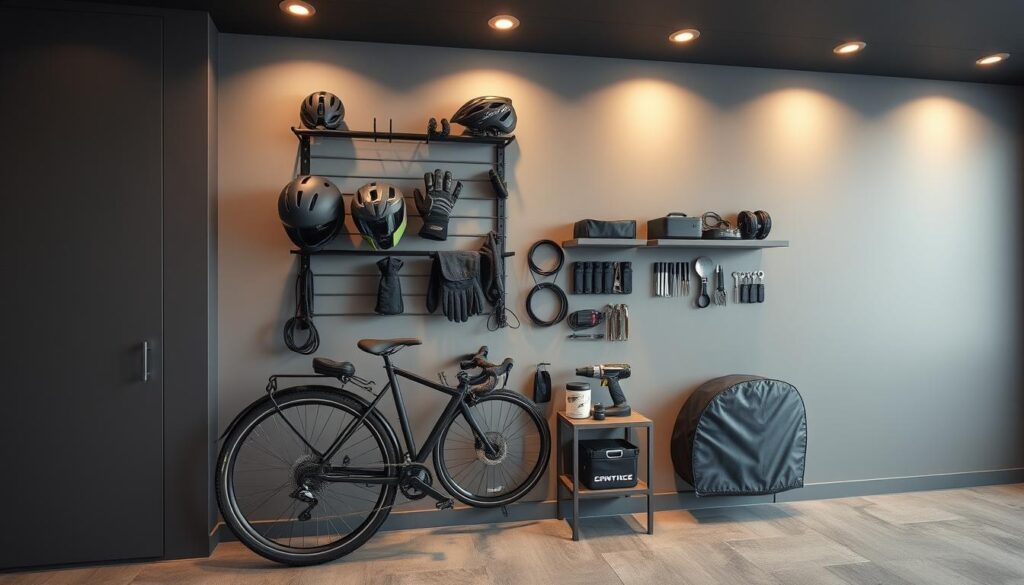
Utilizing Bike Covers and Protective Bags
A waterproof cover is a must-have for outdoor storage. It protects your bike from rain, UV rays, and debris, preventing long-term damage8. Breathable materials are ideal, as they reduce moisture buildup and prevent rust9.
For the battery, consider a neoprene storage bag. These bags keep the battery safe from moisture and temperature fluctuations, extending its lifespan8. Storing the battery in a cool, dry place is equally important for maintaining its health9.
When choosing accessories, match them to your bike’s specific needs and storage environment. For example, a full cover is great for long-term storage, while a half cover works well for short-term use8.
Here are some tips for using storage accessories effectively:
- Always clean your bike before covering it to avoid trapping dirt and moisture.
- Use a weatherproof cover for outdoor storage to shield your bike from harsh elements8.
- Store the battery separately in a protective bag to maintain its charge and prevent damage9.
By investing in quality accessories, you’ll ensure your bike remains in excellent condition, ready for your next ride. These simple steps can save you time and money in the long run.
Winter Storage Considerations and Riding Tips
Winter brings unique challenges for riders, but with the right preparation, your bike can thrive in cold conditions. From managing battery performance to ensuring safety on icy roads, these tips will help you navigate the season with confidence.
Managing Cold Weather Impacts on Your Bike
Cold weather can significantly affect your bike’s performance. Batteries tend to discharge faster in low temperatures, so keep them charged between 50%-70% for optimal longevity10. Store your battery in a cool, dry place, ideally between 55-77°F, to prevent damage11.
Winter tires are a game-changer for icy conditions. Studded tires provide better traction, reducing the risk of accidents11. Lowering tire pressure by 10-20% can also improve grip on slippery surfaces10.
Regular maintenance is crucial. Lubricate moving parts to prevent rust and check brake pads for wear. Wiping down your bike after rides prevents moisture buildup and corrosion11.
Safety Measures and Theft Prevention Strategies
Visibility is key during shorter winter days. Use front and rear lights to stay safe on the road12. Reflective gear adds an extra layer of protection, especially in low-light conditions.
When storing your bike in shared spaces, take precautions to prevent theft. Remove the battery and use high-quality locks to secure your bike12. Storing it indoors, like in a garage or basement, offers added security and protection from the elements11.
By following these steps, you’ll ensure your bike remains in excellent condition, ready for action when the weather improves. Proactive measures during winter can save you from costly repairs and keep your rides safe and enjoyable.
Conclusion
Proper care during off-seasons ensures your bike remains ready for the next adventure. Cleaning, maintaining, and protecting its components, especially the battery, are essential steps for longevity. Storing it in a dry, temperature-controlled space prevents damage and keeps it in peak condition13.
Winter brings unique challenges, but with the right precautions, your bike can thrive. Keep the battery charged between 50%-80% and store it in a cool, dry place to maintain its health14. Regular inspections and lubrication of moving parts ensure smooth performance when you’re ready to ride again.
By following these strategies, you’ll extend your bike’s lifespan and avoid costly repairs. Take the time now to protect your investment, and enjoy many seasons of reliable performance ahead. With careful attention, your bike will stay in top shape for years to come.
Source Links
- Ultimate E-Bike Storage Guide: Tips & Tricks
- Tips for Storing Your Electric Bike During the Winter – Keep Your E-Bike Safe and Ready for Spring!
- How To Store Your E-Bike During The Winter Like A Pro
- How to store an electric bike + 5 storage ideas you may use!
- Outdoor Ebike Storage Tips
- How to Properly Charge & Store Your E-Bike Battery
- This Is the Right Way to Charge, Discharge, and Store E-Moto Batteries – GritShift Media
- How to store an electric bike + 5 storage ideas you may use!
- Top 10 Tips to PROPERLY Store Your Dirt Bike
- greatwesternebikes.com/winter_bike_riding_guide
- Tips for Storing Your Electric Bike During the Winter – Keep Your E-Bike Safe and Ready for Spring!
- Ebike Winter Storage and Use Best Practices
- Are There Any Special Considerations For Storing An Electric Bike?
- How to store an electric bike + 5 storage ideas you may use!
